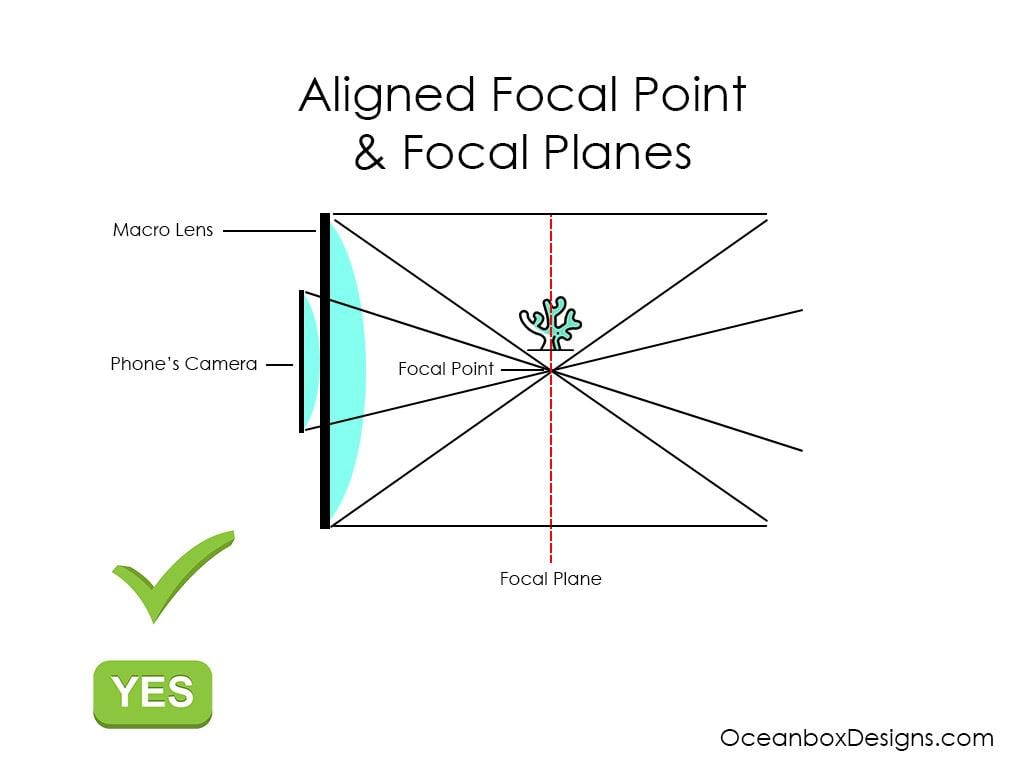Why using a 52mm lens over multiple cameras is a bad idea!
Our ReefLens™ MKII PRO Coral Lens Kit do not to cover phone multi-camera cluster for technical reasons beyond the understanding of non-photo enthusiasts! Although it may be described as more ‘user-friendly,' this is technically an improper implementation that will certainly diminish performance.
When you have a large lens covering multiple cameras, the focal points and focal planes are now offset, and the optimal focus field is entirely off-centered—this is to be AVOIDED! The undesirable effects may include blurry edges, softness (ghosting), and distortion in the center of the image! For optimal performance, both focal points and focal planes need to be center-aligned.
With over 15 years of photography experience, I've learned a thing or two of importance. Below are some infographics I've created to explain this technical analysis, and hopefully, you will too.
Light will always travel parallel through the camera's lens to project into the image sensor and create the image. This is how we achieve sharp focus and optimal performance in general (other factors are involved, such as subject lighting, camera settings, shooting technique, etc).
Aligning focal points and focal planes results in optimal performance, maximizing focus sharpness, increasing light transmission to the image sensor, and reducing ghosting and distortion in the center of the image.
Misaligned focal points and focal planes lead to undesired performance, causing softness (ghosting) or blurriness in the center and edges of the image, reducing light transmission to the image sensor, resulting in a more grainy image, and introducing unwanted distortion in the middle of the image.






